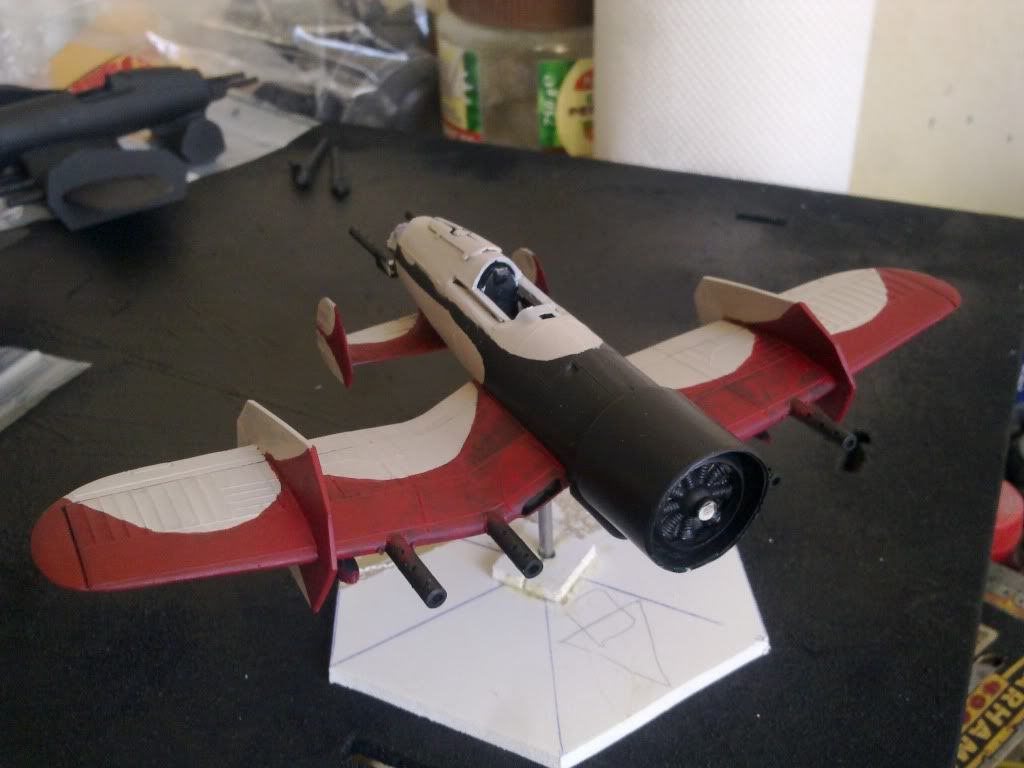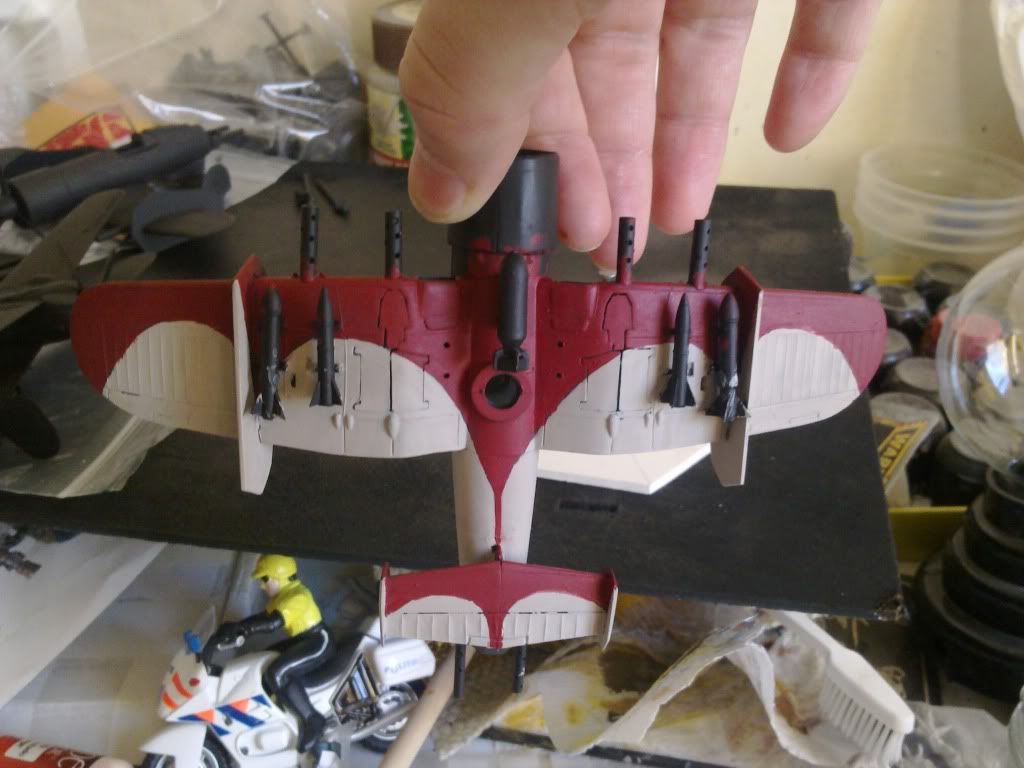Work progresses on the first Brigand, be it rather slowly...
I spent some time hesitating about the colours to use. In the end I went with this:
The black areas on the fuselage still needs to be painted red as well.
The red is slow going, as it needs lots of layers to get neat and even. After the main colours are done, I want to put a dividing line between the cream colour and the red, I'm considering either white, black or yellow?
I'm also thinking about putting a band of yellow and blue checkers on the engine cowling, for some nice contrast.
Markings and such I still need to decide on. There will be nose art though!
In addition, I spent the time the paint was drying to build this:
A militarized version of the DeHavilland Comet racing plane!
High speed, low armour, a .70 and twin .30 in the nose....
The base kit was the old Airfix kit. Not the best of kits, but useful and affordable for this sort of thing.
(I noticed Airfix has released a 1/72nd DH Comet again. I really hope that it's a retooling. This kit really isn't up to par for this day and age anymore....)
The fuselage is too narrow to put a proper plug in. So I just settled for glueing a 6x1.5mm rare earth magnet underneath and just hoping for the best. The plane is light enough anyway.
Edit: just realised, I didn't mention:
The .70 on the comet was made by carefully filing back the nose of the Comet, until the flat plane had the same diameter as the plastic rod (3.2mm, same as I used for the .50s on the Brigand). File carefully, and alternate the direction in which you file, so that the flat plane stays at right angles to the centreline of the airplane.
I then cut a 2cm length of the 3.2mm rod and a 1cm length of tubing that fit precisely over the 3.2mm rod. I glued the 2cm long rod in place on the nose (You can pin this if you want).
Then I glued on the 1cm tube. I made sure only 2-3mm of it protruded beyond the end of the solid rod.This gives the illusion of a hollow barrel, but still makes it easy to paint the interior of the "hole" black.
The .30s were simply 2 to 2.5cm lengths of 2mm diameter plastic tube. I cut them off at an angle and then carefully filed them to match the curve and angle of the fuselage. Once the angle is correct, cut them to identical length and glue them in place.




Geen opmerkingen:
Een reactie posten